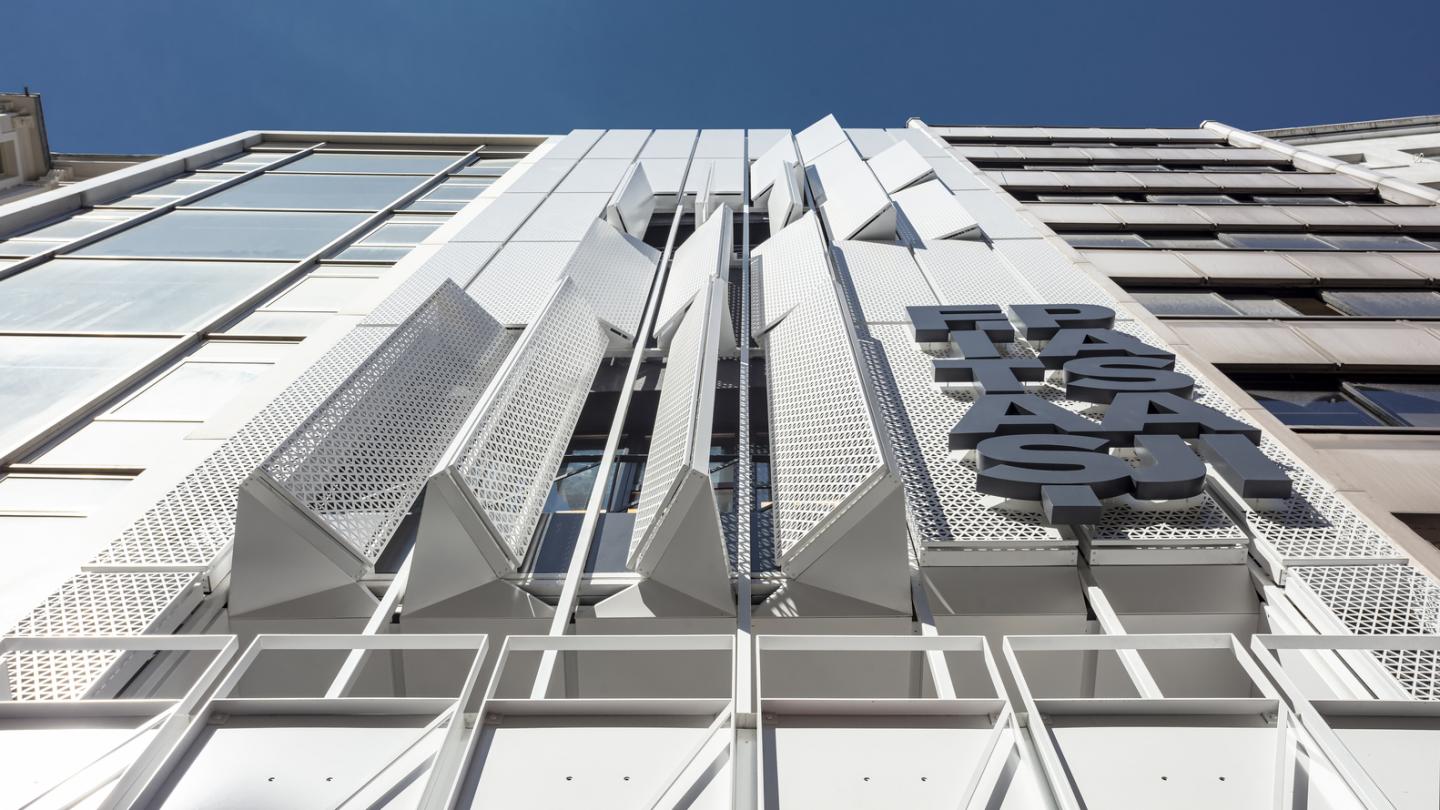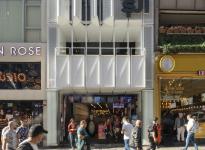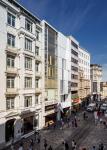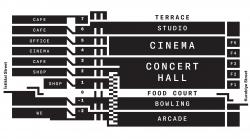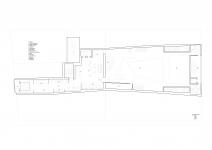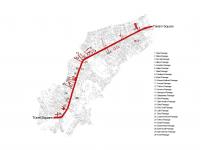Alper Derinboğaz’s adaptive re-use project brings life back to one of Istiklal Street’s original arcade buildings, the Fitaş Passage. A mid 60’s building with no particularly distinguished architectural features, its significance comes from the collective memory of the vibrant cultural and entertainment facilities it has accommodated over time. As the first phase of the project, the new façade has recently been completed.
Istiklal Street, a significant axis in the heart of Istanbul, is a vibrant pedestrian street that has witnessed radical changes in the urban fabric over the years. Due to the transformation caused by tourism and an increasingly commercial profile, it has become a route that is passed through rather than a public space that people choose to spend time in.
The street is celebrated for its distinctive passageways and arcades that connect to the smaller streets behind. These arcades, in varying scales, mostly accommodate small shops at ground level with flats or offices above. One of the modern examples of these arcades is the Fitaş Passage, dating back to the 1960s. Merging many new and unique functions, it gained an important place in collective urban memory while adapting itself to the ever-changing identity of the street. Fitaş Passage accommodated one of the biggest cinemas in Beyoğlu, one of the first national prêt-à porté brands, a bar and even a concert hall where important bands of the ‘70s took stage. However, due to transformations to the physical urban texture and the shifting of the shopping culture to the nearby Şisli district, many of the original functions ceased to exist and the ‘passage’ quality was lost within the building. Since the 1990s, the building has existed as a movie and entertainment centre.
The adaptive re-use of Fitaş project aims to overcome this situation and restore the passageway character with small interventions to the original structure. It establishes a connection between the lively Istiklal Street and the isolated texture of Kurabiye Street behind. Moreover, it delivers additional spaces where upper and lower layers are used for entertainment and leisure activities.
The most important aspect that differentiates the building from the conventional passages is the layering structure which works as a miniature shopping and entertainment centre distributed over seven floors. Thus, the interrelationship of the different functions on other floors is as crucial as the passageway function. In a way, the building is both a horizontal passageway and a vertical street.
The first phase of the renovation project was the design and implementation of a new facade that will attract pedestrians to use the commercial units inside the refurbished ground floor passageway.
The new facade of Fitaş Passage is inspired by the 1970’s signboards that helped form the identity of Istiklal Street. In this respect, the façade elements are designed to emphasize the verticality of the structure that can be perceived not only from the front but also from the pedestrians’ viewpoint walking along at street level.
While the facade openings are positioned according to the functions inside, the windows point to different views to emphasize the connection with Istiklal street at every level. Derinboğaz aims to increase the street relationship of the facade by shaping the façade not just as a plane, but as an articulated interface with intermediate spaces such as the ‘street balcony’ or the ‘entrance gallery’. The balcony above the entrance for instance allows the morning sunlight to penetrate into the passageway.
The second phase of the project will provide additional leisure and entertainment facilities. These include a gay club, an e-sports centre, recording studios, cinema halls with a total of 600 seats, a 2000-seat concert hall, a bookstore, dining area, bowling alley and a small arcade park stacked and distributed to seven floors and two basement levels. Alper Derinboğaz, the project architect, states: ''By merging different functions that we are not
used to seeing together, we hope to see Fitaş Passage come to life as a vertical street rather than a simple multi-storey building.''
2019
2020
Manufacturers: AutoDesk, Meiser, Boardex, Gersan, Gracion, Nova, Regal Profilit, Robert McNeel & Associates
Lead Architect:Alper Derinboğaz
Project Team:Egemen Kaya, Bahadır Kantarci, Ece Avci, Gamze Kaya, Doruk Kayali
Client:Sifisan Fitas
Graphic Design:Yetkin Basarir
Contractor:Nova
Project Managers:Kerem Basci, Erhan Gemalmaz
Site Manager:Ersin Biderci
Structural Engineering:Sigma Engineering
Lighting Design:Kreon
